2008.12.23 20:29
pragmatists turning political?
I'm using "reenactionary" more in terms of how ZP's designs 'reenact' the mat/box/blob paradigm of Le Corbusier's Electronic Calculation Center Olivetti at Rho-Milan. Although intrigued by ZP's 'new politics of the envelope' I'm not sure 'politics' is the right word to describe what it's really about, but it might just be right.
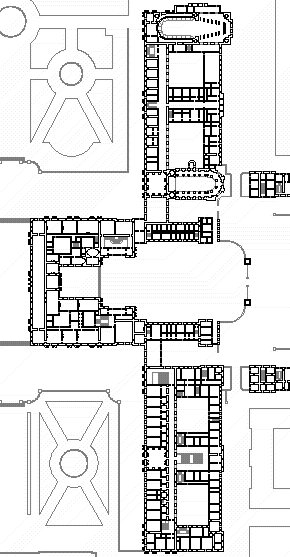
ZP notes how in the past it was in the plan where 'politics' was found, whereas he now see the politics in the envelope, and there seems to be something to that. Just recently I looked closely at the plan of the Palace of Versailles (when I was also reading ZP's essay in Log), and besides the political implication of the King's Bedroom on axis in the center, the similarity in plan of the Chapel and the Opera off to the side respectively got me thinking not just of their relative marginal positions, but how both plans represent 'theaters'. Anyway, if ZP's politics of the envelope can operate/communicate in the same type of way, it seems that would make for a novel/fecund design methodology.
| |
2008.12.24 10:29
pragmatists turning political?
"Instead of a revolutionary architecture, an architecture of explicitation would imply more complex political directionalities as it transforms the space and the material organization of the built environment, even if those transformations cannot be inscribed in a holistic political program. For architecture to express the domestication of density and high-rise life through specific massing strategies in tall buildings, to convey that tendencies in the articulation of the building envelope capture the new political affects, to communicate that certain manipulations of the ground and the roof indicate the politicization of nature, or to explain the breakdown of the correlation between interior and exterior and private and public, are legitimate political performances."
--AZP
That is what I assume to be the gist of the so-called general theory of the building envelope as expressed within 'The Political Agency of Dimension' within "The Politics of the Envelope".
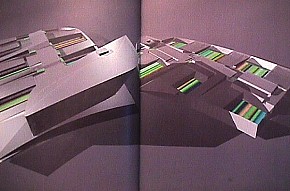
UN Studio, Intramural Centre (project, 1994).
Because I see all this relating to Le Corbusier's late Olivetti project first, I looked again at UN Studio's Intramural Centre (project, 1994) as presented within the "Effects" book of MOVE (1999), since this project too reenacts the Le Corbusier paradigm. And then, as I looked through the rest of MOVE, I began to see that the 'envelope' was already often taken into a kind of 4th dimension, a kind of hyper-envelope. Somewhat ironically, UN Studio's proposal for the Yokohama Port Terminal already portends what AZP is now espousing.
2008.12.25 19:05
pragmatists turning political?
When AZP writes "or to explain the breakdown of the correlation between interior and exterior and private and public, are legitimate poltical performances," it only seems fair to include UN Studio's work.
I mentioned UN Studio's Yokohama terminal project because "the organizing principle of the terminal is the structural association of architecture to infrastructure and landscape; garden-like voids are absorbed into the architecture and then proceed to transform it" and one of the section drawings calls out a 'climatic facade system'. Further reading reveals some strangeness, however. "This design-by-section represents one of our first, incomplete, experiments with 4-D architecture. The building itself was never designed, but 30 sections were worked out, after which 3-D Studio was used to fill in what was left." "Finally a photo-shopped skin was wrapped around the resulting composition in order to simulate the appearance of a building." Politics of the envelope indeed?
from Webster's Third International Dictionary:
politics 1 a : the art or science of government : a science dealing with the regulation and control of men living in society (as nations or states) in both internal and external affairs : the art of adjusting and ordering relationships between individuals and groups in a political community
Electronic Calculation Center Olivetti at Rho-Milan
The huge development is divided into three construction stages:
First stage: main entrance with restaurants, library and other social facilities, then the first sguare workshop block measuring 350 ft. x 350 ft. Above this block are ten storeys of research laboratories.
The assembly shops are at ground level. The entrances, however, are located at roof level. By means of an entrance ramp the employees reach the connecting corridors which lead to the three [amoebae]-shaped locker and washroom blocks. One enters the various shops at ground level by means of stairways.
The workrooms receive well-distributed daylight from above; there is also a plantation on the roof and a sprinkler system which provides cooling during hot weather.
Again AZP: "...certain manipulations of the ground and the roof indicate the politicization of nature."
| |
2008.12.26 12:37
pragmatists turning political?
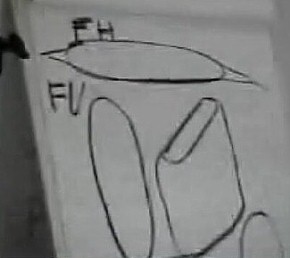
AZP from the Berlage lecture
top: flat horizontal, permeable, social mobility, handling flows, movement
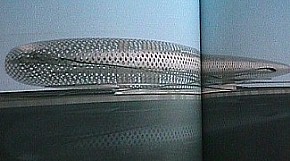
UN Studio, Yokohama Port Terminal, 1994
I'm wondering whether a hyper-envelope can deliver a hyper-politicization.
some coincidental reading from earlier this morning...
"Vico's own approach to this new science was by way of a new theory of knowledge. The first clear trace of this appears in his inaugural oration of 1708 comparing ancient and modern methods of study. The moderns have instituted great improvements in the physical sciences, but have unduly depreciated those studies whose matter depends on the human will and therefore involves vicissitude and probability--languages, poetry, eloquence, history, jurisprudence, politics."
AZP's language does slide easily (to other projects), and that is because much of it is at base a typological analysis.
AZP's language also slides easily from (historical) formal analysis to prescriptive methodology.
| |
2011.04.15
A Mat/Slab/Blob Genealogy
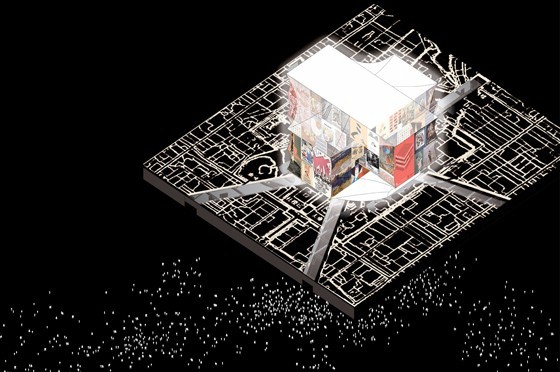
OMA, National Art Museum of China, 2011.04.04.
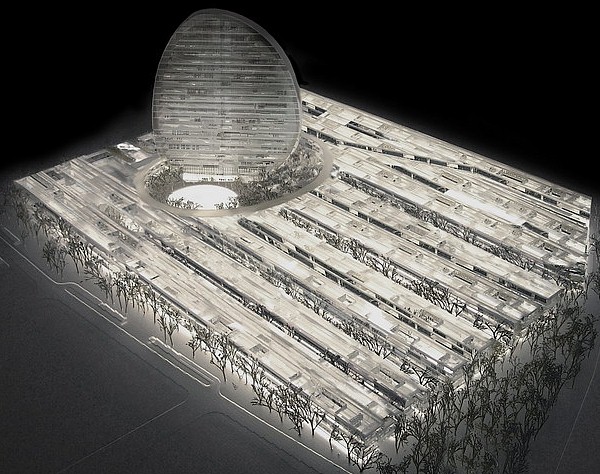
Herzog & deMeuron, BBVA Headquarters, 2008.12.17.
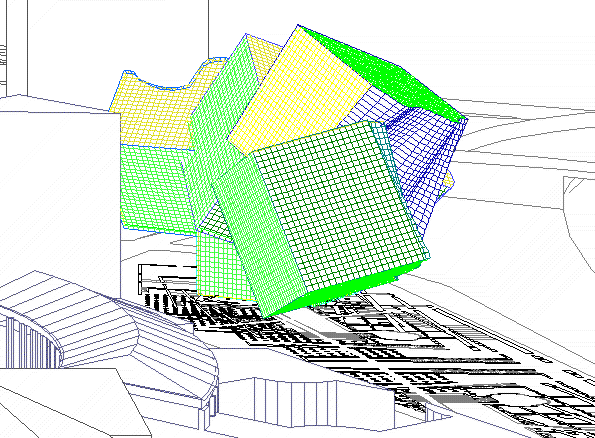
Quondam, Working Title Museum 002, 2000.
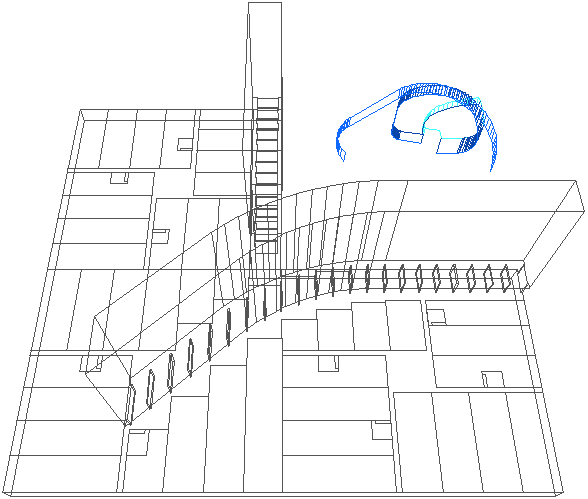
Le Corbusier, Electronic Calculation Center Olivetti, 1963-64.
|